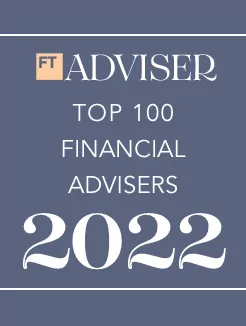2022 has been a challenging year for investors, with concerns over inflation, subsequent interest rate hikes across most major developed markets, the ongoing conflict in Ukraine and continued Covid related closures in China. So, what can we expect in 2023? Charlie Buxton, our Head of Investment Management, takes a look at some of the key themes likely to shape markets in the year ahead.
Over the course of 2022, it has been widely acknowledged that we are in the midst of a much more challenging geopolitical and broader macro-economic environment, with a number of surprise factors taking shape. Keeping the bigger picture in mind when investing is always important, and when looking ahead it’s useful to bear in mind some of the key themes likely to impact the performance of global markets in the months ahead.
Corporate earnings growth
When it comes to the key concern for investors in 2023 it’s likely that corporate earnings growth will feature strongly. Predicted earnings growth in the US next year is still relatively high, with forecasts of 5.6% for S&P 500 earnings growth, and revenue growth at 3.3%. A more favourable backdrop to Europe is also anticipated once inflation shows signs of peaking. But the question remains as to whether corporate earnings forecasts are too generous, and if investors are still too conditioned to the positive returns seen before 2022. Despite signs of inflation tailing off, our approach remains that investors will be best served by holding a well-diversified, strategically positioned portfolio.
The impact of increased interest rates
As interest rates increase, selective bond yields have become attractive again. This is particularly true of some investment grade corporate bonds which are producing an encouraging yield of circa 6% (Source: Trading Economics, US Investment Grade corporate bonds yield). During 2022, US interest rates have risen sharply from 0-0.25% in January 2022 to 3.75-4% today, which has led to an equally abrupt fall in the bond market (as bond prices go down, the yields go up). As a result, investors have the opportunity to lend to very good quality companies and gain an attractive yield in doing so.
China reopening
Having been largely closed off to the rest of the world in 2022 in pursuit of its ‘zero-Covid’ policy, the recent protests in China have resulted in a change of approach from President Xi. This shift is likely to continue in the weeks and months ahead, with a full reopening potentially coming in the second half of next year. China opening up will likely be deflationary for anything it manufactures, and this will no doubt help boost global supply chains. Relations between China and the US will also be key in determining broader investment sentiment, particularly with technology companies.
Changing portfolio structures
The recent sharp increase in interest rates has led to a breakdown of the negative correlation between equities and bonds. As a result, the historical ballast that bonds offer, providing a counterbalance to equities when they fall, has not served investors well this year. So, is the traditional 60:40 equity to bond portfolio still relevant? It remains to be seen whether portfolio structures will fundamentally shift; in the medium term there appears to be an opportunity for portfolios with this asset allocation, as equity prices have fallen and bond yields have risen.
ESG investing
Given the impact of the war in Ukraine, alternative sources of energy are likely to be a big focus going forward, as many countries strive for less reliance on Russia. One message from this year is that most of the world is still highly dependent on traditional energy sources, and it will take a sustained period to move to more renewable sources and become truly energy efficient. As this area evolves, ESG investing will face more scrutiny, especially as more rules around ‘green-washing’ come into play. Higher interest rates this year have also impacted returns, with significant allocations of ESG funds to more growth orientated, duration focused parts of the market. If interest rates do start to reduce next year, this could allow for more positive returns.
It’s clear that some of this year’s challenges for investors are likely to continue through 2023, but investing for the long term means accepting that there will always be some volatility along the way. It’s clear that portfolios will need to be resilient, holding good quality assets and well diversified to capture the opportunities that might come, especially given the more attractive valuations that we’re now seeing across some asset classes.
To discuss your investment portfolio please get in touch with your nearest office.




